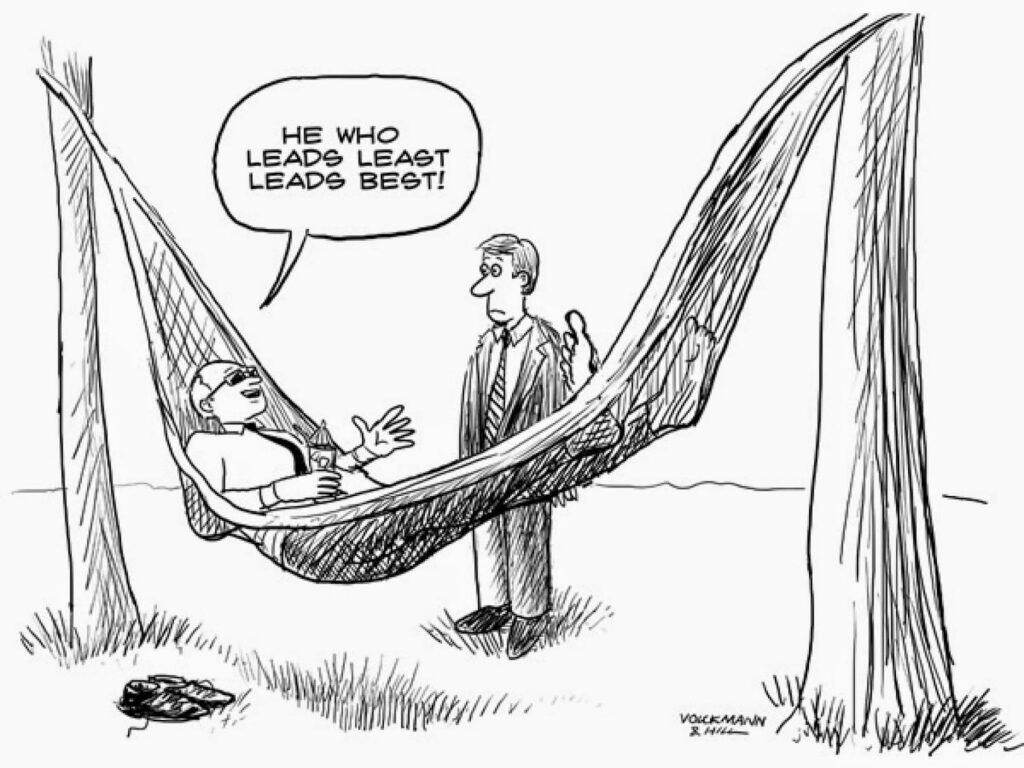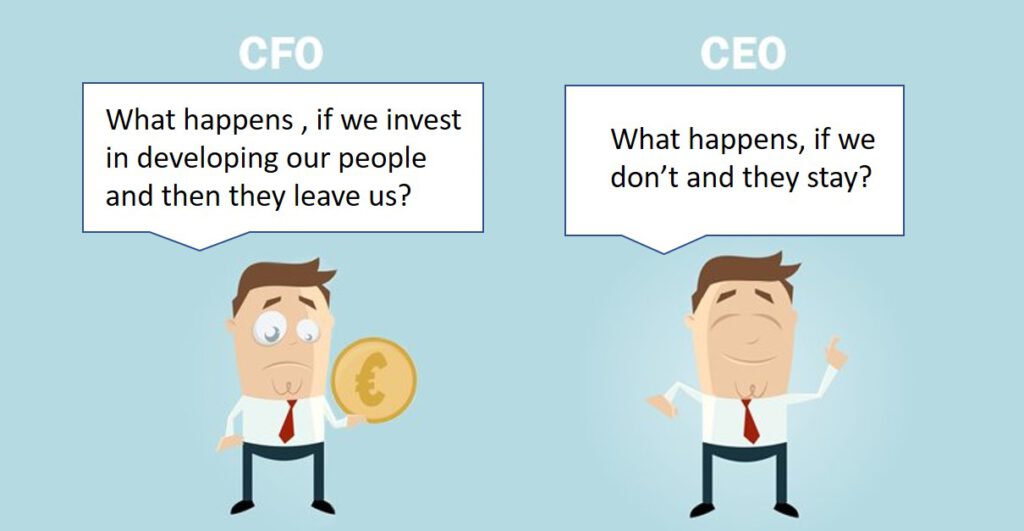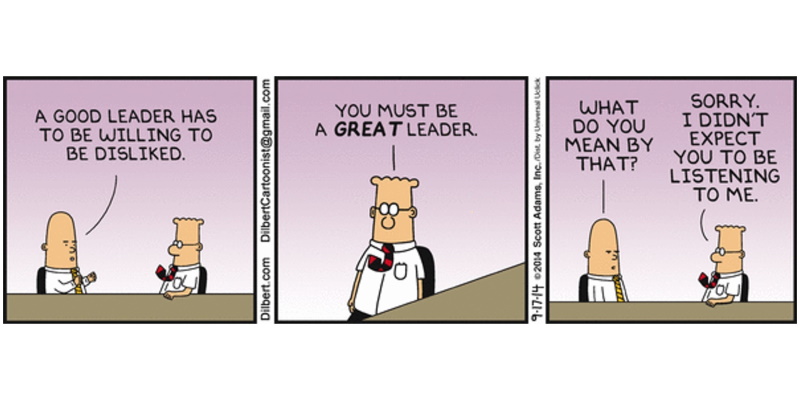Millions of books, articles and blogs have already been written about leadership in general or the right way to manage or better lead your employees. Despite this, or probably just because of it, this subject is always a popular and controversial one. Of course, the way in which employees are managed depends very much on the personality of the manager and also the employee, but the principles always remain the same. Leadership today also needs to be agile.
The typical “boss”
Yes, it still exists. The typical “boss”, who controls everything and everyone, who keeps the employees on a very short leash, who does not delegate responsibility or leave room to move, and who likes to get all the praise for himself when a project is successfully completed. If the project fails, of course, it was the fault of the incompetent employees who did not follow the boss’s instructions. And then there is the sentence: “If I don’t check every detail, it will go wrong”. Sooner or later, this leads to demotivation of the team, who does not see any reason to develop its own solutions. Innovation is practically nipped in the bud. But also for the manager this often ends up in stress and overload, and the risk of wrong decisions increases tremendously.

Laissez-faire
At the other end of the scale, you find those managers who prefer a laissez-faire management style. This means the manager basically does not involve himself at all in the work processes. Employees do not follow any rules, they make their own decisions and manage themselves, so to speak. This does not only sound great for the employees, but also for the manager, who can comfortably sit back and relax instead of struggling with real management tasks. Unfortunately, this management style leads to nothing but decreasing discipline. Goals are not met, employees take advantage of their freedom and there is lack of planning, which often results in chaotic situations. In the end, it can even lead to the strong desire for a real leader. The manager’s feedback is missing and therefore motivation and performance decrease. In my view, that is a lot like anti-authoritarian education of children, which leads to similar problems.

Which leadership style is the right one?
Between the two leadership styles mentioned, which are obviously the two ends of the scale, there are of course many other variations. And again, there are countless papers that try to define and categorize these different variations. But for me real leadership has nothing to do with theories. Why? Quite simply. Because good leadership depends on so many different practical factors. The type of activity you are in, the size of the team, the local proximity or distance of the team members, the skills of the individual employees and much more. In the end all depends on each individual team member. Because behind every employee there is a person with an individual personality. That’s why I can’t really answer easily the question regarding the right management style for myself either. What is right in one case can be wrong or at least inappropriate in the other.
Agile leadership
Experience has shown me that leadership must always be adapted individually. It needs to be agile. I can easily and actually must give more responsibility to an experienced employee, also in order to use his experience in the best possible way for the whole team. On the other hand, I need to closely coach a young and less experienced employee to get him or her introduced to the job. Then over time I must give him or her more and more responsibility so that he or she can further develop the necessary skills. But there must be common goals for everyone, for the whole team, to work towards. Everyone should identify him- or herself with these goals and above all there should be clear deadlines. Within the framework of these goals and deadlines the employee should be given the freedom to manage him- or herself and hopefully develop creative solutions. More experienced employees will need less support, less experienced employees will need more. As a manager, it is important to always have an open ear and an open door. The open door is meant literally here, if you are not already sitting in an open work environment anyway. Closed manager’s offices with anteroom secretaries should be really something of the past. Do you sometimes have to exercise authority? Of course. That is why you are a manager. Sometimes decisions must be made “top down”. Absolute democracy does not work. Not in a state and not in a company. The question is always how well you can explain the background of your decision. If you succeed with this, you will also take those team members with you who disagree. They most probably will still not agree, but at the end they will subordinate themselves to the team and commit to move forward (“disagree and commit”).
Employee development
Every employee, or at least the vast majority, has a clear idea of what he or she wants to achieve at least in the medium term. Very often this is well aligned with the skills of the individual. Sometimes it is not, which is usually based then on a high discrepancy between self-perception and the perception of others. Therefore, it is very important to talk with each individual employee about his or her personal development, and not just talk about it, but also work out a development plan. Here I don’t mean monstrous, sophisticated systems and processes that are put over every employee and then maybe even use artificial intelligence to create an individual development plan. By personal development I really mean personal. Together with the employee you should define which possible career path best suits the interests and the skills of the individual and then determine which training courses, tasks and projects over a period of the next six to twelve months can lead the employee on this path.

The mix makes the difference
As already mentioned, in my view there is not the one ideal leadership style. Depending on the individual employee and the situation, you have to balance between being a bit “bossy” or rather a bit laissez-faire, between close regular interchange when things are not going too well and then withdrawing again when everything is moving in the right direction. Make suggestions and stimulate thoughts when things stall and allow creativity to prevail when ideas are bubbling over. In agile work environments, you also need to apply agile leadership.
There is one last topic which I still need to mention in this context. This specific issue especially gets tricky, when things are not going too well and, once again, a little more authority is needed. It is not uncommon that there are also private relationships between a manager and the one or the other employee. You meet on private occasions and therefore also know each other on a more personal level. Here the old, simple, and probably non-agile, German rule still applies: “Work is work, and schnapps is schnapps”. Without any compromises.

